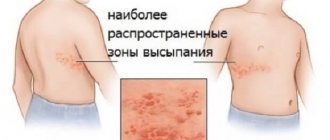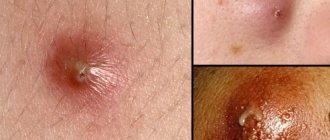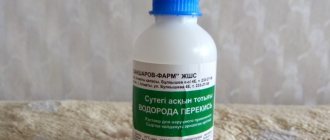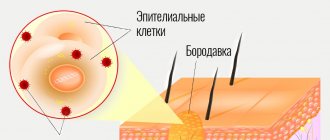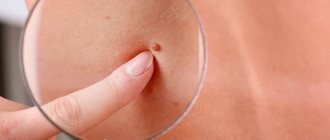How does primary infection occur?
Often, the initial infection with a herpes infection has no symptoms and is not noticeable. But it happens that complications appear along with herpes:
- gingivostomatitis - inflammation of the oral mucosa and gums;
- an increase in temperature, accompanied by the appearance of blisters and ulcers in the mouth;
- herpetic panaritium (inflammation of the finger tissue) - the infection can spread to the fingers if they are pulled into the mouth;
- rashes can occur throughout the oral cavity, affecting the gums, which turn red and bleed. The child refuses to eat because the process becomes painful.
Herpes symptoms
Currently, most people are infected with some type of herpes virus. It is believed that antibodies to the Epstein-Barr virus can be detected in almost every adult (up to 98% of the adult population of the Earth). Antibodies to herpes simplex virus type 1 are detected in 90% of the adult population of large cities.
However, as a rule, carriage of a herpes infection does not lead to the development of the disease. The herpes virus is activated when the body's defenses decrease. The weaker the immune system, the more likely the virus is to transition from dormant to active.
That is why the herpes simplex virus type 1 is popularly called “cold on the lip.” The appearance of herpetic rashes is usually preceded by a common runny nose, that is, ARVI. The disease weakens the immune system, which is what the herpes virus takes advantage of.
Symptoms of herpes simplex
When infected with herpes simplex virus type 1, the incubation period ranges from 1 to 8 days. Typical symptoms: chills, fever up to 39-40°C, headache, general weakness and drowsiness. Then redness appears, in place of which characteristic bubbles form. When the oral mucosa is affected, blisters are usually found on the inside of the lips, tongue, and less often on the palate, palatine arches and tonsils. Bubbles appear at the site where the virus enters the mucous membrane. Subsequently, the bubbles burst, leaving behind painful erosions.
The disappearance of symptoms does not mean complete recovery. The virus remains in the body and after some time (in conditions of decreased immunity) a relapse of the disease is possible. Relapses can occur 1-3 times a year for several years and even decades.
Symptoms of genital herpes
The incubation period of genital herpes lasts from 1 to 10 days, after which itching (burning) may be observed in the areas of future rashes. After which swelling appears, and then groups of bubbles appear on the mucous membranes of the genital organs. The inguinal lymph nodes are enlarged. The blisters burst and erosions and ulcers form in their place. The process can last from two to five weeks.
Relapse of the disease is possible within two weeks after the initial lesion. Relapses occur in at least half of those who have recovered from the disease.
How to fight a “cold”?
If herpes appears for the first time or in a baby under 6 months, and the disease is accompanied by fever and affects not only the lips, then you need to consult a pediatrician for antiviral therapy.
Often recurrent infections go away on their own. But you can shorten their duration by using local antiherpetic agents (active ingredient acyclovir).
Ways to reduce discomfort:
- apply a cold compress to the area of the rash;
- avoid sour and spicy foods;
- choose cool drinks;
- if there is severe pain, then use ibuprofen or paracetamol;
- Do not use products containing lidocaine due to possible side effects or overdose.
How to prevent the spread of the virus:
- it is important to ensure that the child does not scratch the rash and wash his hands;
- use individual dishes, towels, toothbrushes for a child with a herpes infection;
- during an exacerbation, you should not engage in contact sports;
- a child with a “cold” on his lips should not kiss other people.
Why did herpes appear on the gums?
For the virus to make itself felt, two things are enough: its presence in the blood and a weakened immune system.
Infection occurs by airborne droplets and can be transmitted from mother to child. Unfortunately, once you become infected with herpes, you can no longer get rid of it. But you can prevent its activation.
So, after infection, virus particles settle in the body forever. Most of the time the virus does not manifest itself in any way. What factors provoke the manifestation of the virus on the gums? Stress, including sudden nervous shock, chronic depression and fatigue, colds, bacterial and viral diseases, hypothermia, autumn or spring hypovitaminosis. A common cause of the appearance of “bubbles” characteristic of this disease is acclimatization. Are you familiar with the situation when the disease manifests itself on vacation, when changing time zones? Therefore, when planning trips, it is better to immediately stock up on antiviral drugs and ointments.
Reasons for appearance
Blisters on the lips can appear for a variety of reasons. If a person accidentally damages the mucous membrane with his teeth, this leads to the appearance of a neoplasm.
When tissue is damaged, inflammation of the cellular structure occurs, against which a blister appears. Pathology can also appear in patients with a variety of dental diseases.
Poor diet is often the cause.
For damage that is mechanical in nature, a blister may appear. Improper oral care leads to the development of pathology.
It can also occur against the background of an allergic reaction or predisposition. Improper functioning of the hormonal system is the cause of pathology. Blisters can also occur due to a variety of diseases:
- Candidiasis;
- Herpes;
- Shingles;
- Pemphigus;
- Glossalgia.
Blisters on the lips can be caused by the person themselves or occur against the background of a variety of diseases. In the second case, it is imperative to seek help from a doctor who will prescribe rational treatment.
Symptoms
If the pathological condition was provoked by the patient himself, then, as a rule, it is not accompanied by additional symptoms. When the disease appears, the patient begins to complain of pain.
Quite often the blister causes a burning sensation.
Most patients complain of itching. Some patients experience fever, which may be followed by chills. Lymph nodes may enlarge when a pathological condition appears.
These diseases may be accompanied by general malaise. A person gets tired quickly even when doing usual things. Due to the discomfort caused by the blister, patients most often lose their appetite.
If at least a few of the above symptoms appear, a person needs to see a doctor. Only a specialist, based on the research conducted, can correctly diagnose and prescribe rational treatment.
Possible complications.
More often, the disease passes without dangerous consequences for the patient. But with weak immunity, especially in young children, severe herpes sore throat can lead to serious complications caused by the spread of the virus to other organs:
- serous meningitis
- heart pain, myocarditis
- pyelonephritis
- encephalitis
- conjunctivitis.
To exclude the development of serous meningitis, you need to consult a neurologist; if you have heart complaints, you need to contact a pediatric cardiologist. If there are changes in the general urine test, you must make an appointment with a pediatric nephrologist.
With proper and effective treatment of herpes sore throat complicated by meningitis, the prognosis is usually favorable. But at the same time, the treatment of the youngest patients requires careful attention. With myocarditis the situation is more severe. Any complications of herpetic sore throat require the intervention of specialists!
Treatment of herpes sore throat in children
There is no specific antiviral treatment. Treatment of the cause of herpetic disease should be carried out according to the following scheme:
- isolation of the patient
- drinking plenty of fluids, bed rest
- actions aimed at relieving and alleviating symptoms.
At the moment, no drug has yet been invented that can kill the causative agent of the disease. You can only alleviate or remove the symptoms. A person recovers completely only when the body develops immunity to the virus. Usually the body takes a week to do this.
First of all, it is advisable to isolate the child from other family members - separate dishes, linen and towels - the disease is contagious. For herpetic sore throat, children are prescribed antihistamines to relieve swelling and irritation. "Claritin", "Suprastin" and others are suitable. To reduce the temperature, use antipyretics: Nurofen, Efferalgan, Paracetamol, etc. To relieve pain in the throat, gargle with decoctions of sage, chamomile, calendula, salt or soda solution. Rinsing should be done every hour. You can use special sprays and aerosols: Hexoral, Ingalipt, Tantum-Verde. Tablets and lozenges relieve pain. It is advisable to use the antiseptic agents Miramistin and Chlorhexidine.
For successful recovery it is necessary to create favorable conditions for the child. It is necessary to provide conditions for sleeping in a well and frequently ventilated room. The diet should consist of soups, purees, and cereals. Food should not be hot so as not to irritate a sore throat. Don't forget about drinking plenty of warm drinks. The patient can be given rosehip decoction, tea with jam or honey.
Note to parents! In case of herpes sore throat, do not inhale, warm up or apply compresses under any circumstances. Such measures will only activate viruses, and the disease will drag on.
Some parents mistakenly lubricate the bubbles in the larynx with iodine or brilliant green. This measure is absolutely ineffective, does not bring any practical benefit, but causes severe pain to the baby.
There is no need to give your child antiherpetic drugs such as Acyclovir and its analogues. As we have already mentioned, the course of the disease has nothing to do with the herpes virus.
Symptoms of the disease
Herpes sore throat in a child does not manifest itself for seven to fourteen days. This is the incubation period for the disease. Then symptoms appear that are similar to those of other infectious diseases: acute respiratory infections, acute respiratory viral infections, influenza, intestinal infections - therefore, at the initial stage, herpetic sore throat is difficult to diagnose:
- high temperature up to 40°C
- severe sore throat, sore throat, cough
- Gastrointestinal disorders (vomiting, diarrhea, abdominal pain)
- muscle pain
- enlarged lymph nodes in the neck
- In infants, convulsions are possible.
Abdominal pain and digestive disorders are associated with the activity of enteroviruses in the intestines that cause herpes sore throat - they affect the intestinal and stomach mucosa, thereby disrupting their functioning. On the second or third day of illness, a characteristic rash appears on the palate and tonsils, similar to blisters with liquid. The appearance of these rashes is a sign that we are dealing with herpetic sore throat. When these bubbles burst, they form ulcers, which create discomfort and pain in the mouth. A child experiencing severe sore throat may refuse not only food, but also drink. Increased salivation is possible, since the receptors that affect saliva production are constantly irritated.
If the baby has a weak immune system, the formation of bubbles can occur in several “passes” and with a break of two to three days, accompanied by a repeated increase in temperature and symptoms of intoxication. There are cases when rashes appear on the legs, arms and body, but not on the face.
The fever usually subsides on the third to fifth day, and mouth ulcers disappear within a week. When the peak of the disease passes, the child feels significant relief - improvement occurs on the sixth or seventh day after the appearance of the first symptoms. But we must remember that for a certain period the child remains a source of infection! One of the differences between herpes sore throat and acute respiratory infections is the absence of nasal discharge, although swelling of the mucous membrane is present. Also, outbreaks of acute respiratory infections and acute respiratory viral infections in the summer, as a rule, do not happen, which cannot be said about this type of sore throat. In summer, heat contributes to the rapid spread and high activity of enteroviruses, and the number of cases of herpangina increases accordingly.
Normally, herpetic sore throat in children lasts from eight to ten days.
Dear parents! Diagnosis and treatment of herpetic sore throat in children must be carried out under the supervision of an otorhinolaryngologist, since it is not always possible to make a correct diagnosis on your own (due to the similarity of the initial symptoms of the disease with other viral diseases). Failure to start proper treatment on time can result in a protracted illness and complications!


